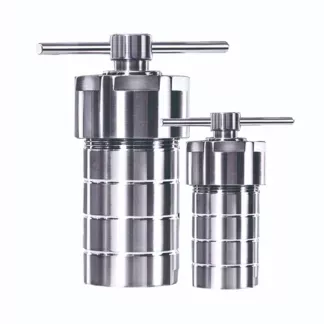Hydrothermal Autoclave
Features of the Hydrothermal Autoclave:
High Pressure and Temperature Capability: Designed to withstand high pressures (typically up to 2000 bar) and temperatures (up to 300°C or higher).
Sealed Design: Ensures containment of reactive substances and safety during high-pressure operations.
Temperature Control: Equipped with heating elements and temperature sensors for precise control of reaction temperatures.
Pressure Control: Often includes a pressure relief valve or safety features to prevent over-pressurization.
Material Compatibility: Constructed from corrosion-resistant materials such as stainless steel or titanium to withstand aggressive reaction conditions.
The Hydrothermal Autoclave is an essential tool for conducting hydrothermal synthesis, a method used to produce a wide range of materials through chemical reactions under high temperature and pressure conditions in an aqueous medium. Its sealed design allows researchers and scientists to safely perform reactions that require controlled environments, preventing contamination and ensuring reproducibility of results. The autoclave’s capability to reach high pressures and temperatures enables the synthesis of materials such as nanoparticles, zeolites, and metal-organic frameworks, among others.




